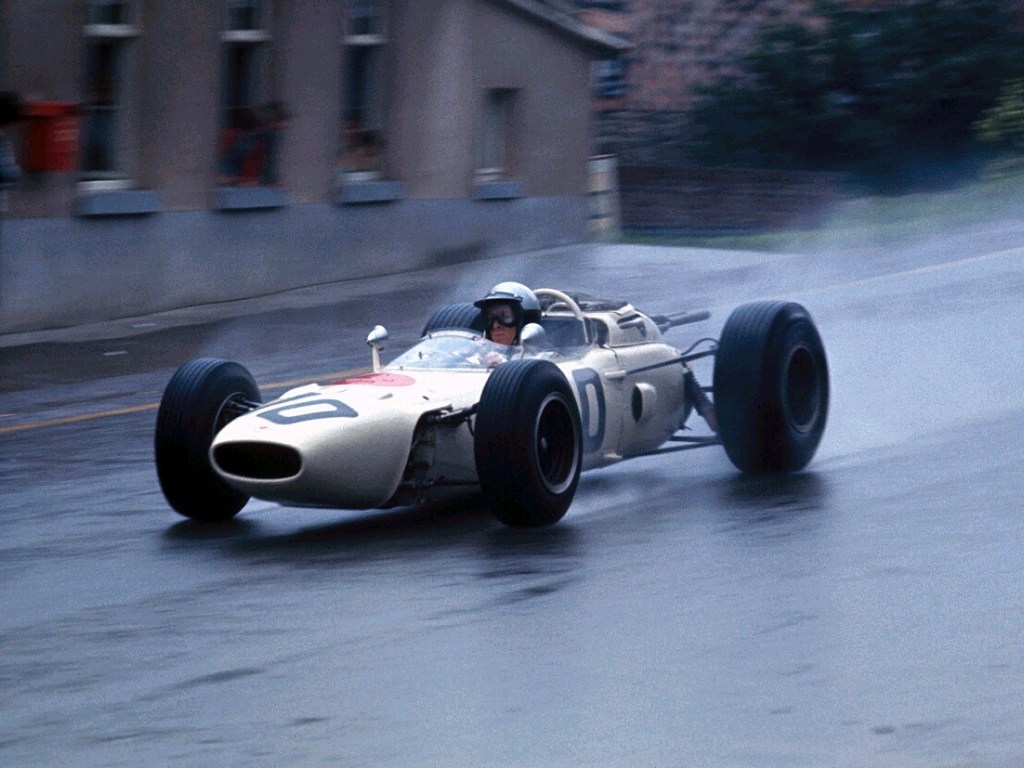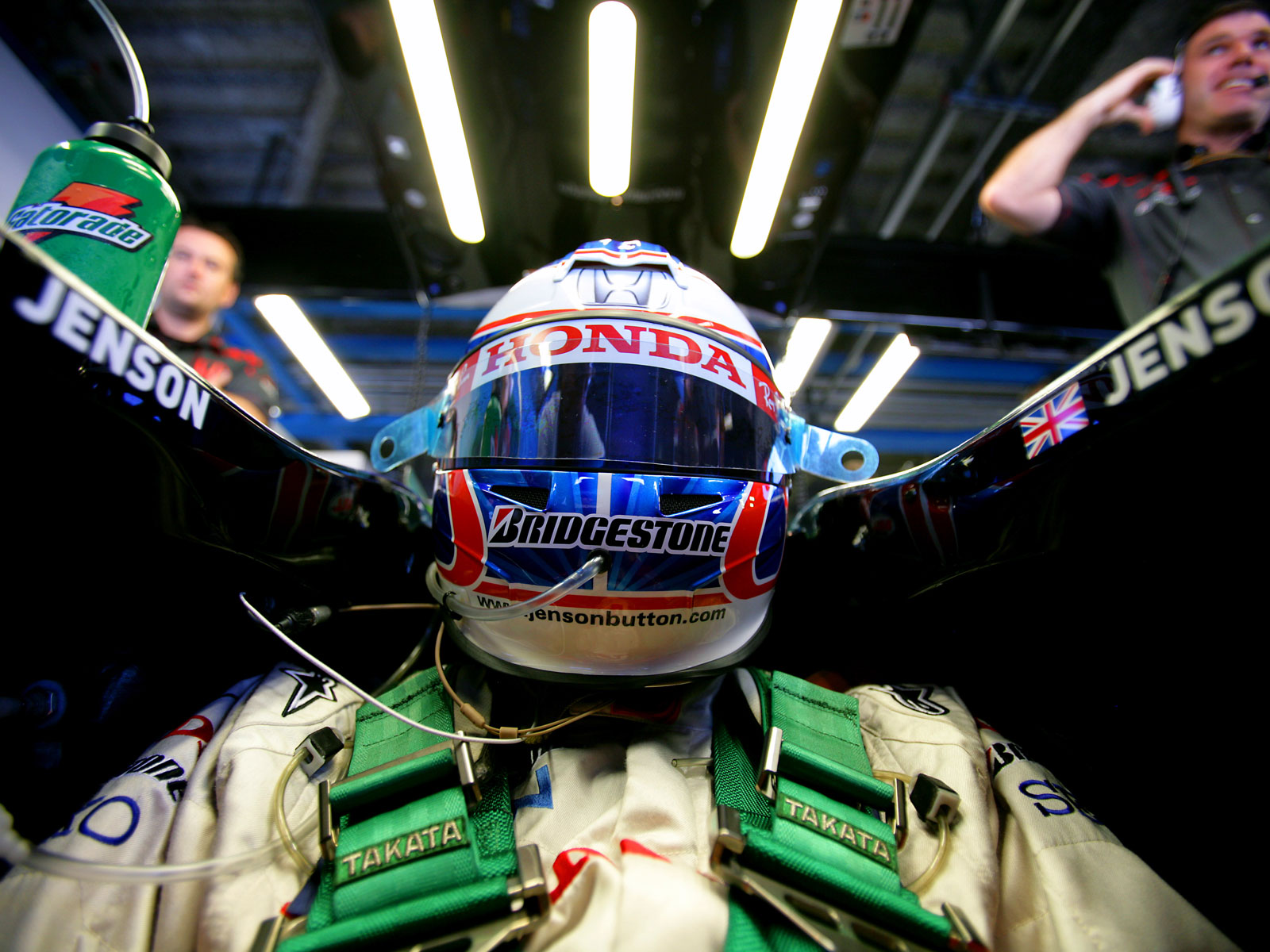"In 1966, 3-litre normally aspirated engine regulations were introduced to F1 with a 1.5-litre equivalency formula for anyone wanting to run a turbo instead. Nobody did. Until, that is, a decade later. The British Grand Prix of 1977 saw two highly significant "

The Impossible Dream…
Honda’s F1 history dates back to the early sixties when the company looked to translate its motorcycling success onto four wheels.
Honda tried to strike a deal with Lotus and Colin Chapman, which had won the world championship with Jim Clark in 1963 but when Chapman decided against it, the Japanese pressed ahead with their own car and engine. The Honda RA271E, with a load-bearing transversely-mounted V12, made its debut at Nurburgring in 1964 with young American Ronnie Bucknum driving.

Starting a trend that would continue, F1 Hondas were prodigiously powerful if sometimes heavy. The RA272 gave around 230bhp, estimated to be 10% more than its rivals, and allowed ex-Ferrari driver Richie Ginther to win the company’s 11th race, the 1965 Mexican GP, the last race for the 1.5-litre F1 category.
The new 3-litre V12-engined car ran second on its debut in ’66 and the following year Honda elected to run a single car for John Surtees — the only man to win world championships on two wheels and four – who had fallen out with Ferrari. Lola’s Eric Broadley designed the RA301 chassis, dubbed the Hondola, which first raced in the ’67 Italian GP at Monza. Surtees battled with Jim Clark and Jack Brabham and when one ran out of fuel and the other ran wide, the car won its first GP having led the one and only lap it would ever lead!
In 1968 there was pressure to run an air-cooled V12 to promote air-cooled road cars and the RA302, using lightweight magnesium parts, was built. On testing it, Surtees declared it dangerous and refused to race it. Honda France brought in Jo Schlesser to drive it in the French GP after Johnny Servoz-Gavin turned it down. The unfortunate Schlesser died in a horrible fireball accident when he crashed on the second lap of the last F1 race to be run at Rouen. Surtees finished second in the RA301. Surtees again refused to race the 302 at Monza and shortly afterwards Honda announced a ‘temporary withdrawal’ from F1.
That lasted until 1983, when Honda returned as an engine supplier with the new Spirit team, which graduated from F2 amid F1’s turbo era. The RA163E engine showed enough promise for Williams to do a deal to run Hondas the following year. Keke Rosberg found on/off turbo power delivery and a flexing chassis a tricky combination, but took the Williams-Honda to victory in Dallas.
At the end of 1985, Rosberg and Nigel Mansell won the last three grands prix in Williams-Hondas. The team was dominant in ’86 as Mansell and Nelson Piquet won nine races and the constructors championship but lost out in the drivers championship to Alain Prost when Mansell suffered a spectacular tyre blow-out 18 laps from the end of the season finale in Adelaide.
The team won 11 of 16 races in ’87, with Piquet claiming his third drivers’ title. Honda, however, switched allegiance to McLaren in ’88 as the RA168 engine gave Ayrton Senna his first world title in a year that saw the Brazilian and team mate Prost win 15 of 16 races for McLaren-Honda.
It would have been a clean sweep had not Senna tripped over a backmarking Williams-Judd a handful if laps before the end of the Italian GP. In a great irony, the Williams was driven by Jo Schlesser’s nephew Jean Louis who, standing in for Mansell, who had chicken pox, was making his first F1 start on the eve of his 40th birthday…
In an era of continuing McLaren domination Prost (89) and Senna (90) took world titles with V10 Honda power, then Senna repeated the success and took his third and final crown in ’91 with the V12 Honda RA121E-engined McLaren MP4-6. At the end of ’92, however, with the active suspension Williams-Renault now dominant, Honda withdrew once again.
They were due to return with a chassis being tested by Jos Verstappen and developed by Harvey Postlethwaite in ’99 but the project was stillborn and Postlethwaite died shortly afterwards from a heart attack at a Barcelona test.
Again as engine suppliers only, Honda returned with British American Racing and Jordan, eventually buying out BAR in 04/5 and returning solely as the Honda Racing F1 Team in ’06. Jenson Button gave them a first win in nearly 40 years with the RA806 in a mixed-condition Hungarian GP, but the going was tough.

It got tougher still in 07-8 with no sign of a competitive car. Ross Brawn had been recruited, however, and early in a hopeless 08 season, the decision was taken to concentrate on next year’s car. During that time a Japanese aerodynamicist came up with the double diffuser that was key to the ’09 season. Suddenly though, in a shock announcement in December 08, with the worldwide recession taking hold, Honda pulled the plug. Button went on to win six of the first seven ‘09 races en route to the championship. Honda reputedly injected over £90m running budget to avoid having to close down the Brackley factory. The car though, ran as a Brawn and carried a Mercedes engine. If only they’d known…
CLICK TO ENLARGE








